View the Exhibit to examine the PL/SQL block.
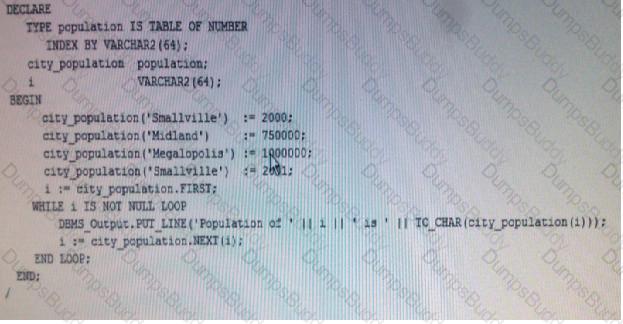
Which statement is true about the execution of the PL/SQL block?
View the Exhibit and examine the structure of the customer table.
You need to create a trigger to ensure that customers in category “A” and “B” have a credit limit of more than 8000.
Examine the following trigger.

Which statement is correct about the outcome of this trigger?
View Exhibit 1 and examine the structure of the EMP table.
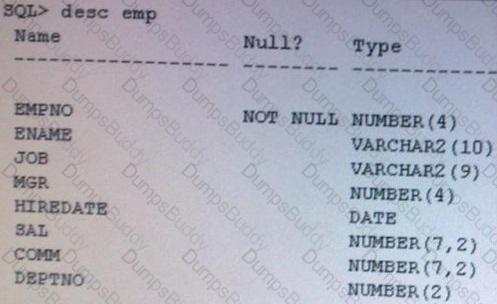
View Exhlbit2 and examine the code of the packages that you have created.
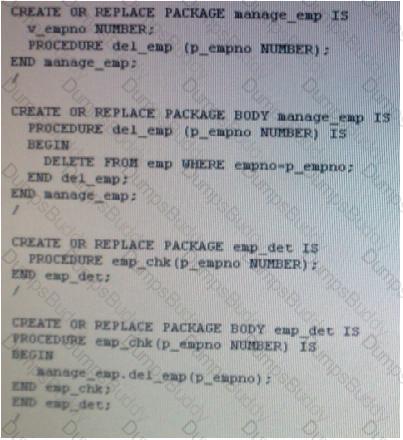
You issue the following command:
SQL> DROP PACKAGE manage_emp;
What is the outcome?
Examine the following PL/SQL code:
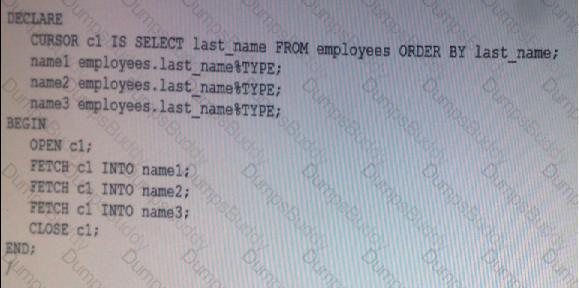
Which statement is true about the fetch statements in the PL/SQL code?
Identify situations in which the DBMS_SQL package is the only applicable method of processing dynamic SQL. (Choose all that apply.)
View the Exhibit to examine the PL/SQL code.
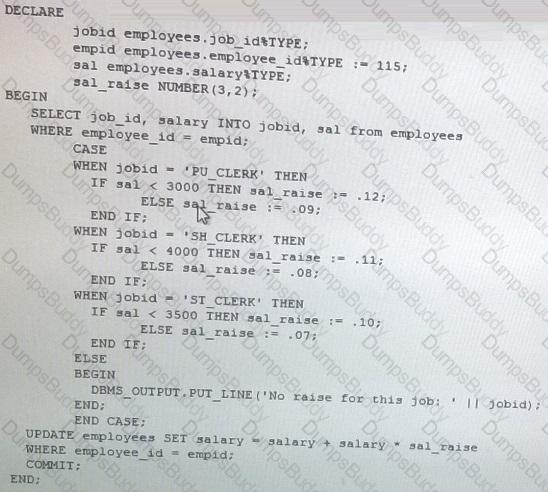
SERVEROUTPUT is on for the session.
Which statement is true about the execution of the code?
Which two statements are true about the handling of internally defined or user-defined PL7SQL exceptions? (Choose two.)
View the exhibit and examine the structure of the products table.
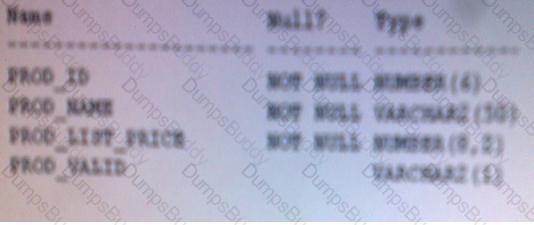
Examine the following code
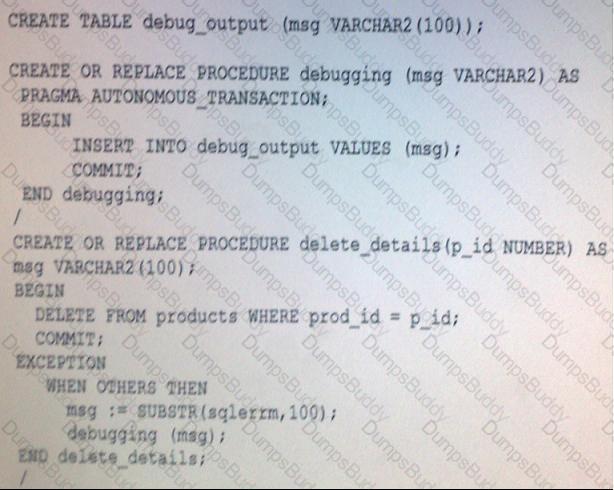
Which statement is true when the procedure DELETE_DETAILS is invoked?
View the Exhibit and examine the structure of the EMP table.
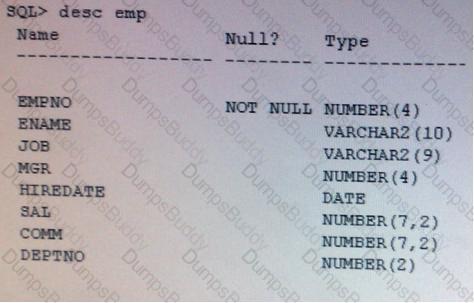
You want to create two procedures using the overloading feature to search for employee details based on either the employee name or employee number.
Which two rules should you apply to ensure that the overloading feature is used successfully? (Choose two.)
In which of the following scenarios would you recommend using associative arrays?
Which two statements are true about statement-level and row-level triggers? (Choose two.)